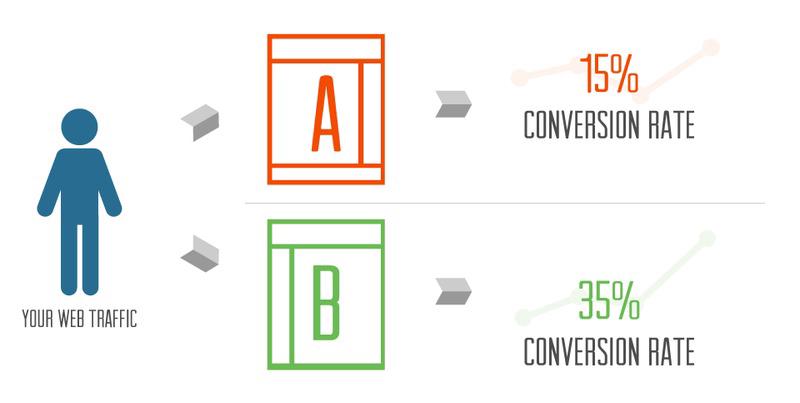Understanding Conversion Rate Optimization
Conversion rate optimization (CRO) focuses on getting the most value from the traffic already landing on your site. It involves comprehending user behavior and identifying the actions you want visitors to take, whether it's filling out a form, subscribing to a newsletter, or making a purchase. The goal is to boost the percentage of visitors who perform these desired actions.
A conversion can be any desired task, such as buying a product, signing up for a service, or downloading an ebook. These conversion actions are your goals, the critical points where a visitor turns into a lead or customer. The conversion rate measures how frequently these actions happen, calculated by dividing the number of conversions by the number of visitors, then multiplying by 100 for a percentage.
Improving conversion rates is essential because it can lead to more qualified leads, higher revenue, and lower costs per acquisition. By optimizing your site, you get more value from your existing traffic, making more efficient use of your marketing spend and gaining a better understanding of your audience.
A well-optimized site that aligns with user needs encourages loyalty and trust, paving the way for repeat business. It enhances user satisfaction and brand reputation by providing a seamless experience that guides visitors confidently.
Calculating Conversion Rates
To calculate conversion rates, identify the specific actions you want to measure as conversions. The formula is straightforward:
Conversion Rate = (Number of Conversions ÷ Number of Visitors) × 100
This equation determines the percentage of visitors who completed a desired action on your website. For instance, if an ecommerce site had 15,000 visitors and 300 made a purchase, the conversion rate would be 2%. Similarly, for a SaaS company with 5,000 visitors and 250 trial sign-ups, the conversion rate would be 5%.
Consider evaluating conversion rates for individual website elements, such as specific pages or actions like signing up for a newsletter. This segmented analysis provides deeper insights and helps identify areas requiring optimization.
To give context to your conversion rates, compare them against industry benchmarks. Benchmarks vary widely depending on the industry, type of website, and specific goals. When comparing, consider factors like traffic quality, user intent, and industry competitiveness.
Regular monitoring and analysis are vital, as conversion rates fluctuate based on various factors, including changes in traffic sources, marketing campaigns, and user behavior trends.
Key Areas for CRO Implementation
Homepages are critical for fostering initial engagement. Ensure your primary call-to-action (CTA) is prominent and aligns with user intent. Incorporate visually appealing elements like high-quality images or videos, and consider integrating a chatbot for real-time assistance.
Product pages require a balance of information and aesthetics. Include high-resolution images and videos showcasing the product, detailed descriptions emphasizing benefits, social proof like customer reviews, and compelling CTAs like "Add to Cart" or "Buy Now."
Blogs can drive conversions by embedding relevant CTAs within posts. Strategically place these CTAs where readers are most engaged. Optimize blog content for search engines and structure articles to answer user queries comprehensively. Add internal links to relevant products or services.
Landing pages have a singular goal: conversion. They should be designed with minimal distractions and a clear, compelling CTA. The headline must convey the value proposition, while supporting content should reinforce this. Use trust indicators like testimonials and guarantees, and A/B test different versions.
Effective CRO Techniques
A/B testing involves comparing two versions of a webpage or element to determine which performs better in terms of conversions. This technique provides objective data to inform decisions and allows you to refine elements to suit your audience.
Optimizing CTAs is crucial. An effective CTA is clear, concise, and visually prominent. It should use action-oriented language and be strategically placed where users are most likely to notice and click it.
Improving page load speed is essential, as slow-loading pages can frustrate users and lead to high bounce rates. Techniques like optimizing images, reducing plugins, and minimizing JavaScript and CSS files can enhance speed.
Leveraging social proof, such as customer testimonials, product reviews, and user-generated content, can build trust and encourage conversions. Ensure that reviews and testimonials are genuine and relevant.
Combining these techniques creates a robust CRO strategy. Regular analysis and adjustments based on real-time data are essential to maintaining and improving your site's performance.

CRO Tools and Resources
- Heatmapping tools like Hotjar and Crazy Egg visualize user interactions on your site, helping you understand where to place key elements to maximize engagement and conversions.
- A/B testing platforms like Optimizely and VWO allow you to conduct experiments by comparing two versions of a webpage to see which one performs better. These tools offer robust analytics and features like advanced segmentation.
- Google Analytics provides comprehensive data on site performance, traffic sources, user behavior, and conversion rates. By setting up goals and conversion tracking, you can monitor how users progress through your site and identify bottlenecks.
- Tools like Crazy Egg and FullStory offer session recordings and user feedback features, allowing you to watch real user sessions and gather qualitative data alongside quantitative metrics.
- Plerdy combines heat maps, session recordings, and SEO optimization features, providing insights into how SEO impacts user behavior and conversion rates.
- HelloBar is a pop-up builder that helps you capture leads and drive conversions through customizable pop-ups, slide-ins, and bars.
- Tools like Unbounce and LeadPages are invaluable for creating and optimizing landing pages, offering drag-and-drop builders and A/B testing features.
By leveraging these tools, you can gain a deep understanding of your audience, pinpoint areas for improvement, and systematically test and refine your website's elements.

Continuous Improvement and Growth
Focusing on CRO fosters an environment where conversions thrive, and the customer journey is smooth. By continuously refining your strategies based on real-time data, you set the stage for sustained improvement and scalable results, ultimately leading to long-term business growth.
- Eisenberg B, Eisenberg J, Davis W. Buyer Legends: The Executive Storyteller's Guide. Austin, TX: Portfolio; 2019.
- Ash T, Ginty M, Page C. Landing Page Optimization: The Definitive Guide to Testing and Tuning for Better Conversions. 3rd ed. Indianapolis, IN: John Wiley & Sons; 2022.
- Barker M, Barker P. The Ultimate Guide to Conversion Rate Optimization. 2nd ed. Woodbury, MN: Lulu.com; 2021.
- Ledford JL. Web Metrics for Conversion Optimization: Improve Your Website's Conversion Rate. Sebastopol, CA: O'Reilly Media; 2021.
- Fetherstonhaugh B. The CRO Handbook: A Structured Approach to Conversion Rate Optimization. New York, NY: Independently published; 2020.


